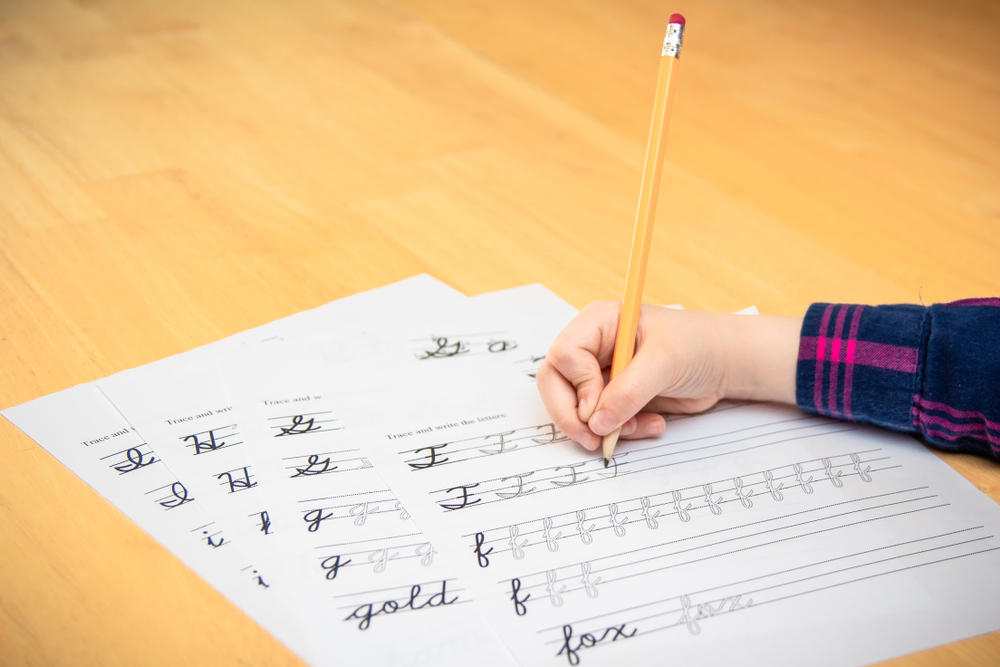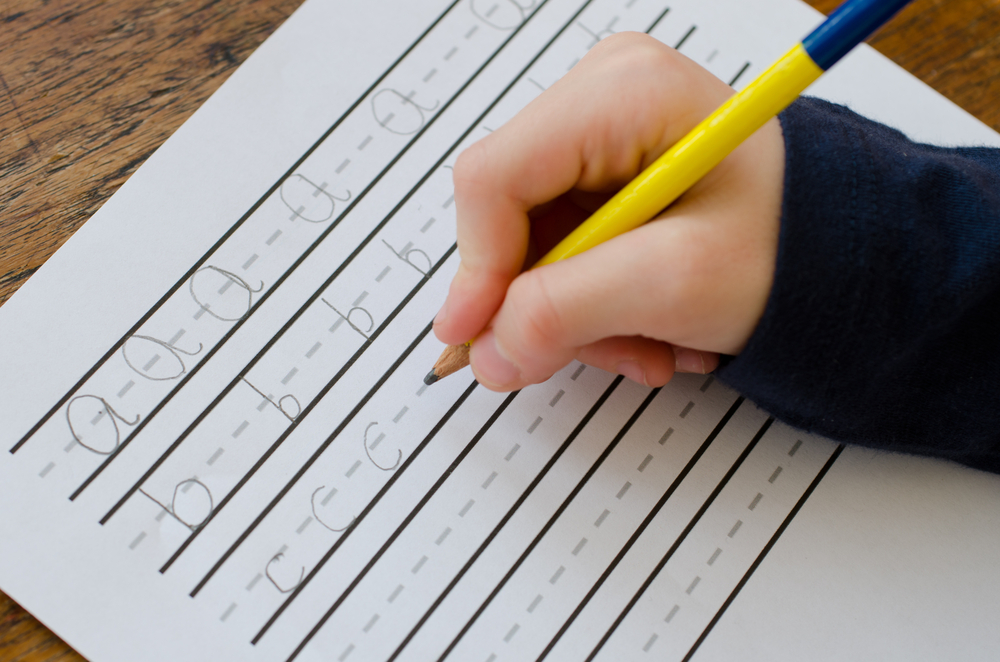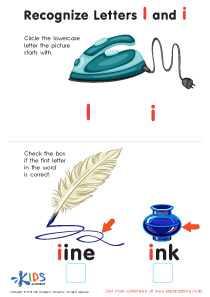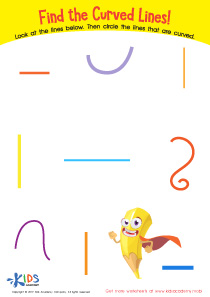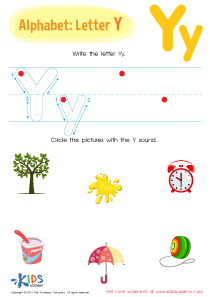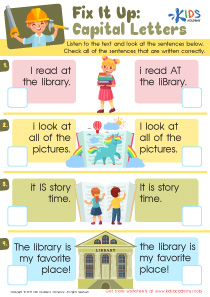Cursive writing practice Cursive Alphabet Worksheets for Ages 4-8
11 filtered results
-
From - To
Enhance your child’s handwriting skills with our Cursive Alphabet Worksheets designed for ages 4-8! These engaging worksheets provide fun, interactive ways for young learners to master cursive writing. Each sheet features beautifully crafted cursive letters and traceable exercises that promote fine motor skills and letter recognition. Our curriculum supports essential skills while encouraging creativity and confidence in writing. Ideal for homeschooling or supplementary learning, these worksheets make cursive practice enjoyable and effective. Start your child's journey to elegant handwriting today, and watch them transform their writing style with ease and flair! Explore our colorful and comprehensive resources now!
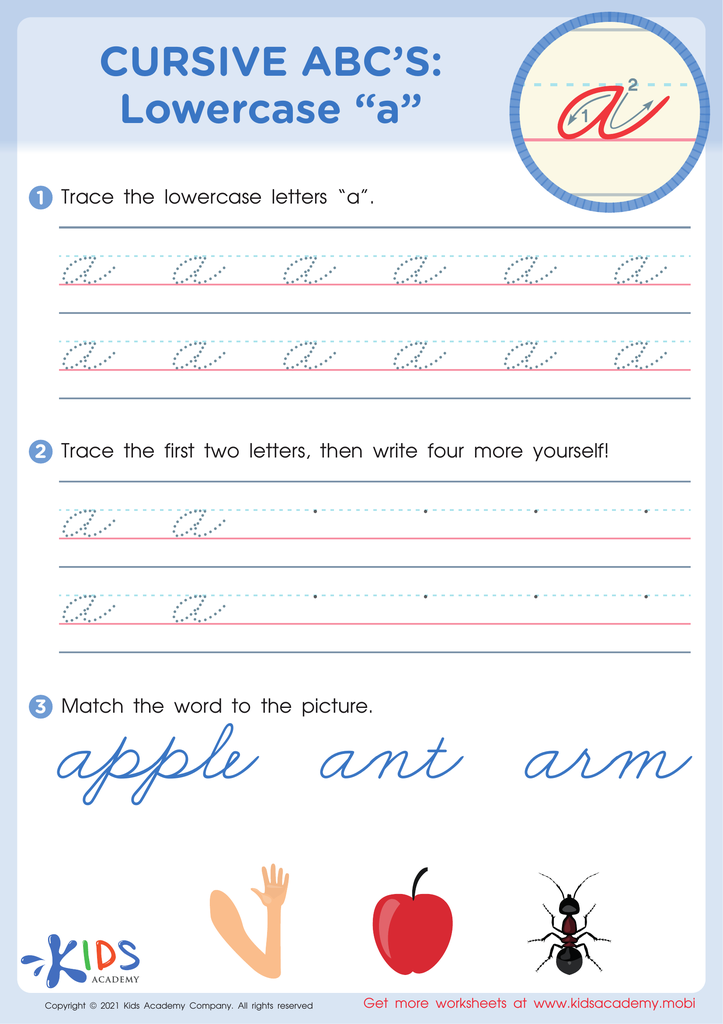

Cursive ABCs: Lowercase a
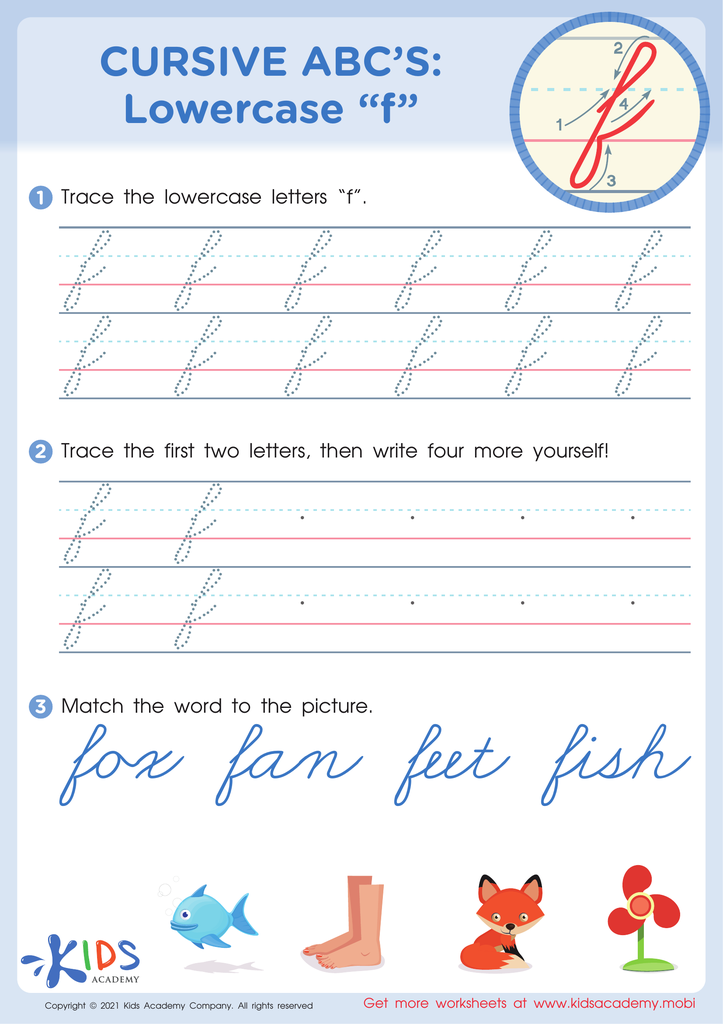

Cursive ABCs: Lowercase f
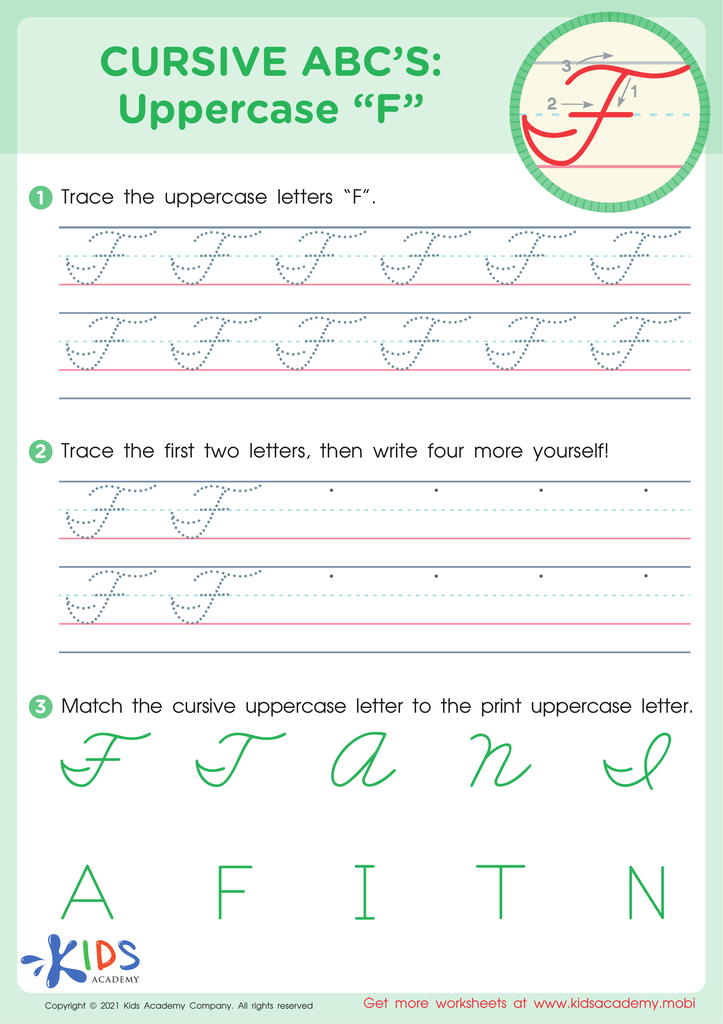

Cursive ABCs: Uppercase F
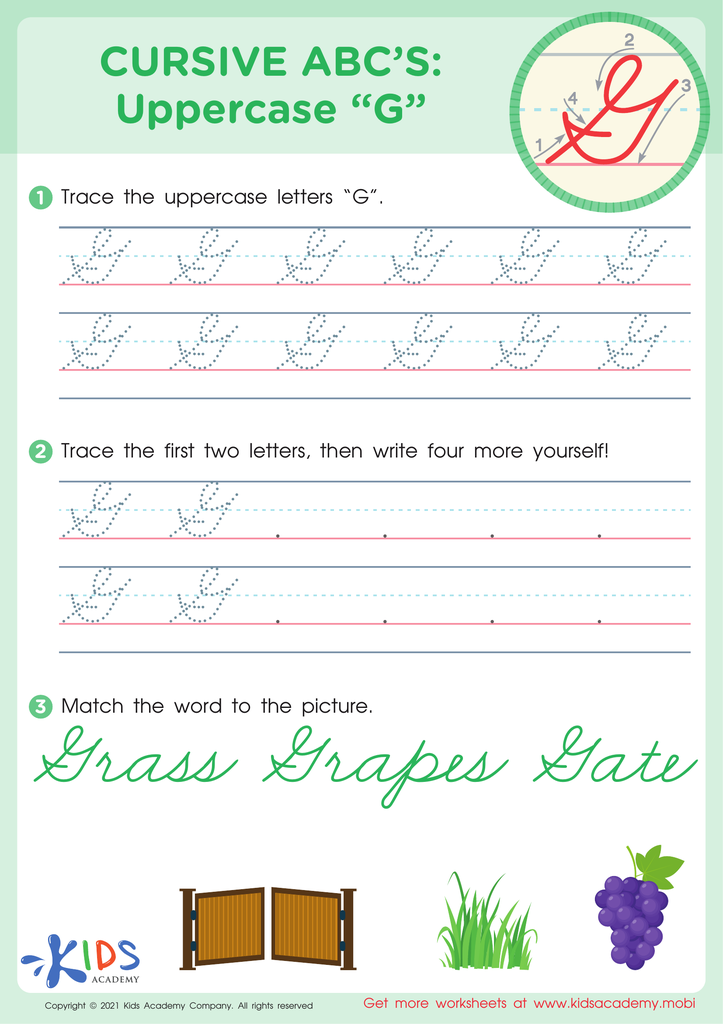

Cursive ABCs: Uppercase G
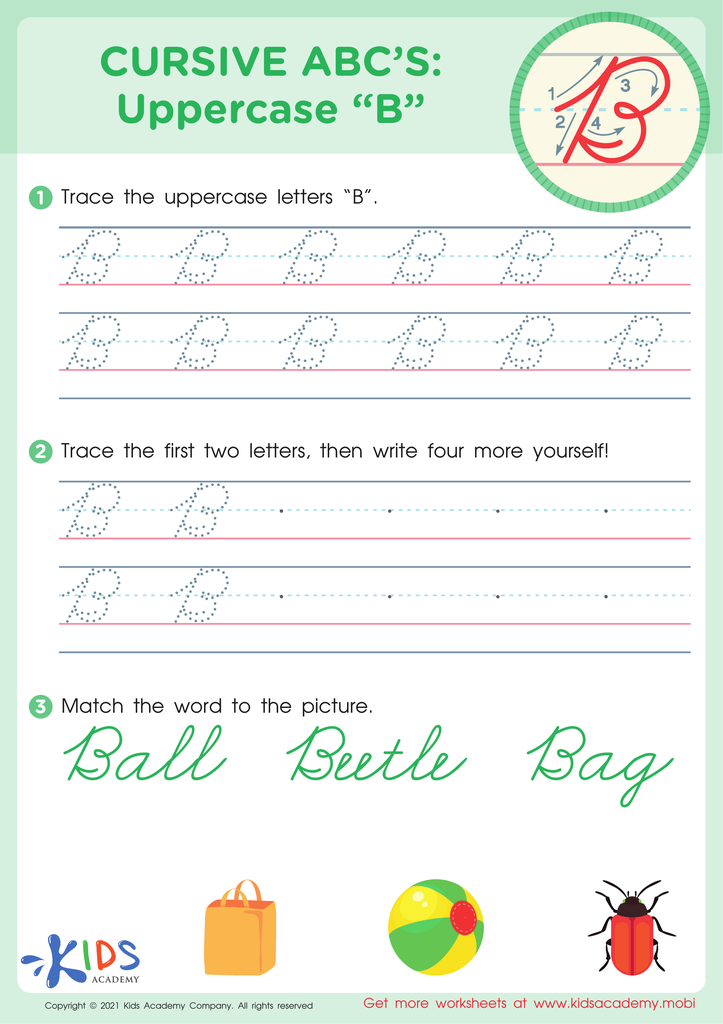

Cursive ABCs: Uppercase B
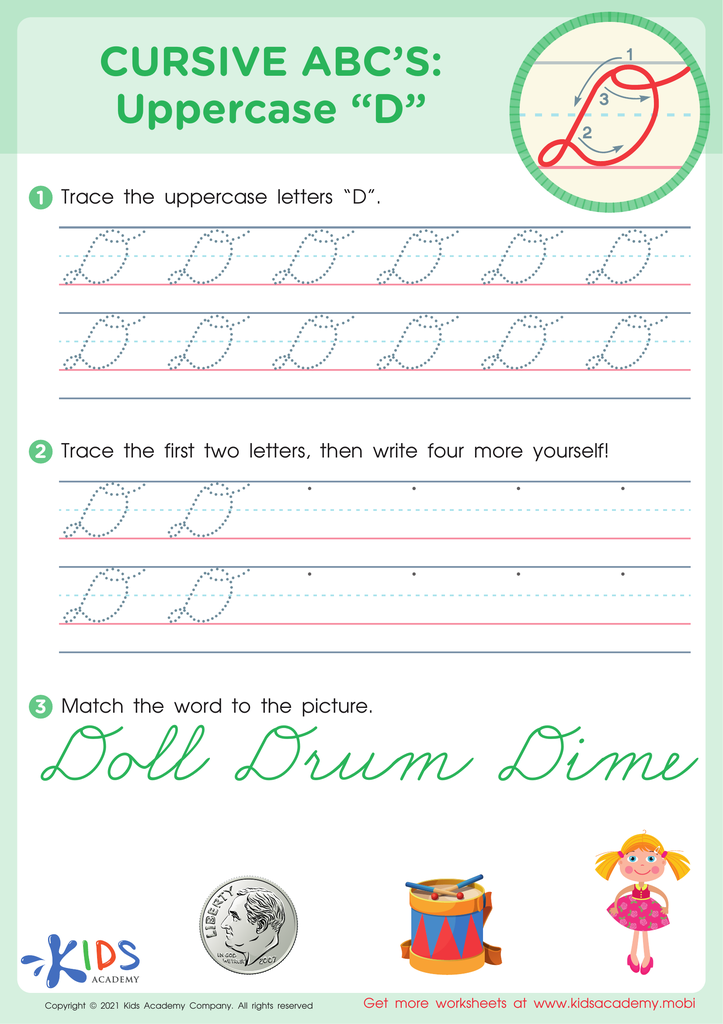

Cursive ABCs: Uppercase D
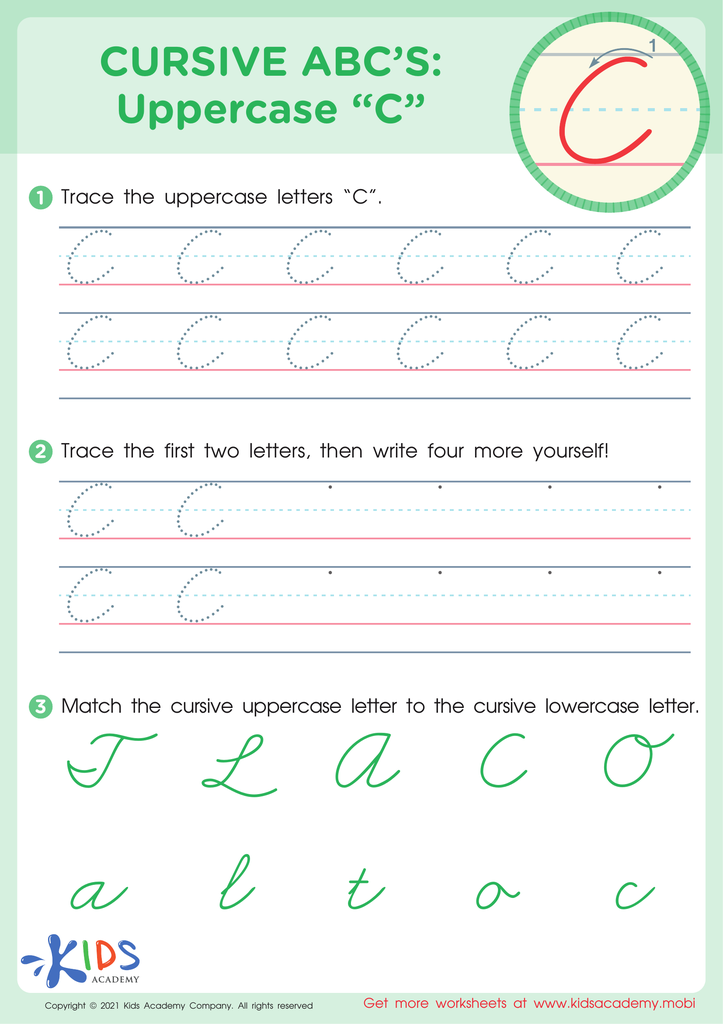

Cursive ABCs: Uppercase C
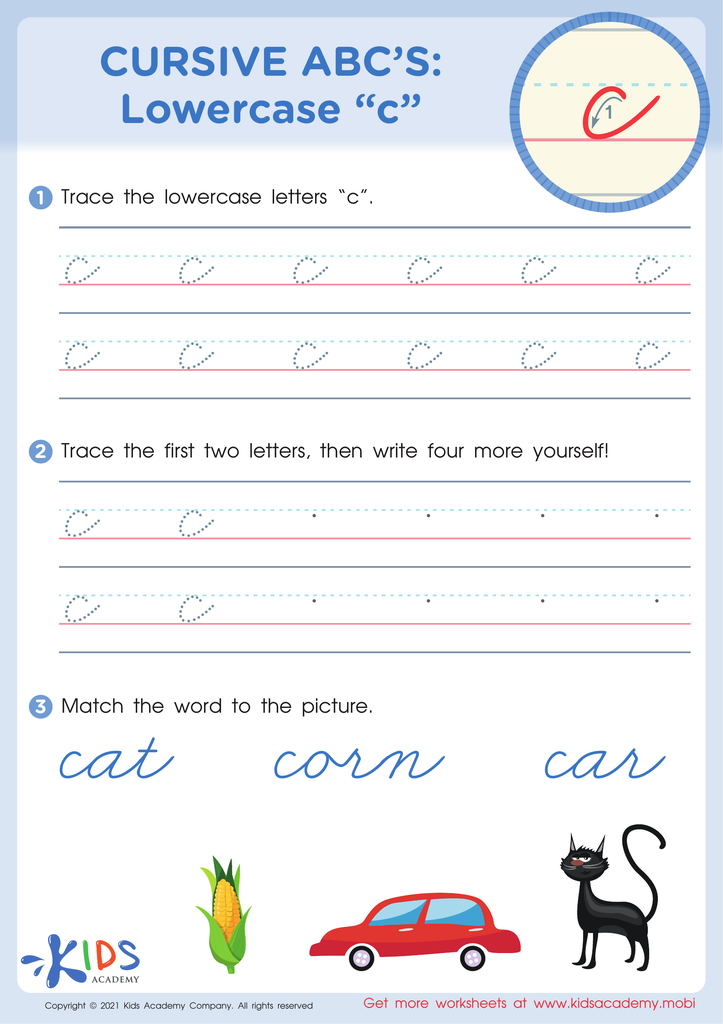

Cursive ABCs: Lowercase c
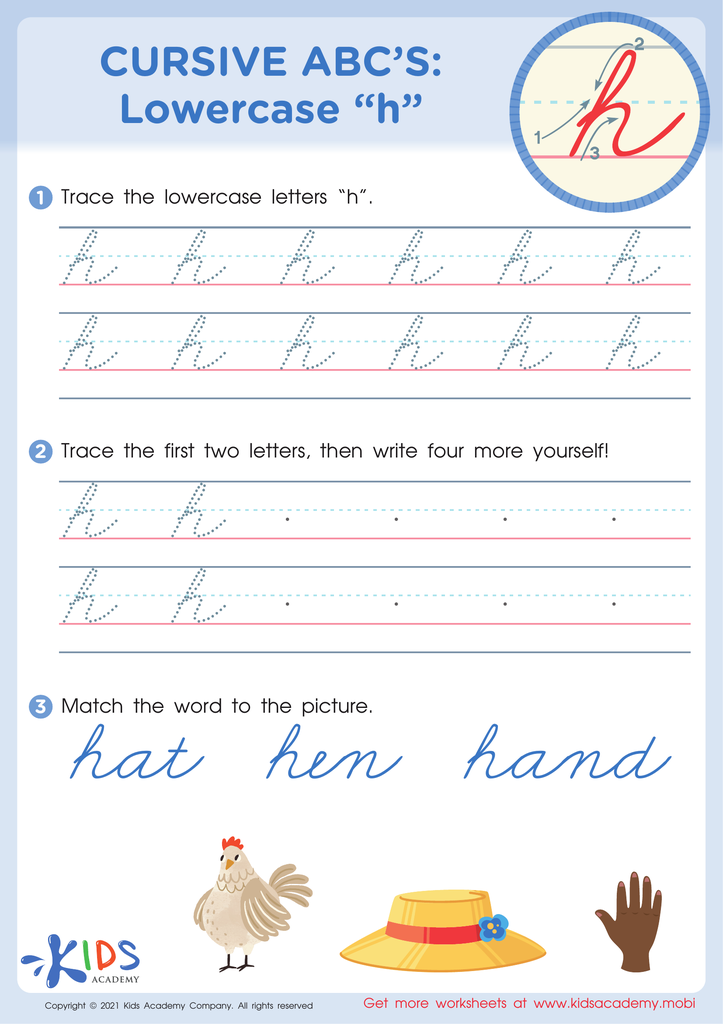

Cursive ABCs: Lowercase h
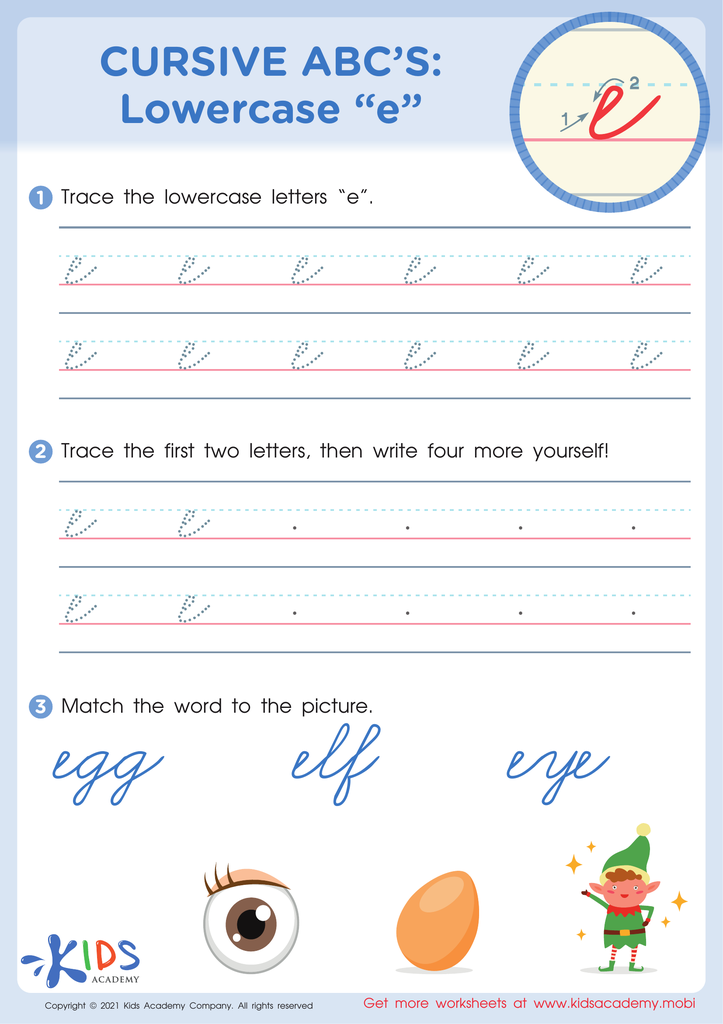

Cursive ABCs: Lowercase e
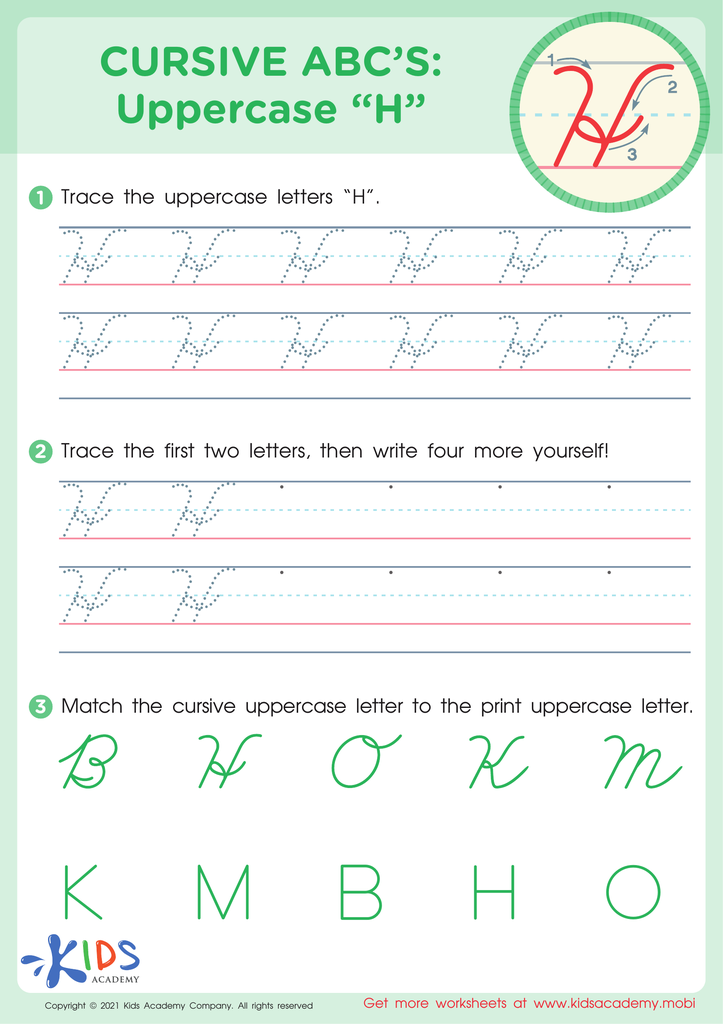

Cursive ABCs: Uppercase H
Cursive writing practice is an important aspect of early literacy development for children aged 4-8. First and foremost, it enhances fine motor skills, enabling young learners to develop better hand-eye coordination and control, which are essential for all writing tasks. Unlike print handwriting, cursive requires continuous strokes, which helps improve muscle memory and dexterity.
Additionally, cursive writing fosters a unique connection between language and creativity. When children learn cursive, they engage in a more fluid writing process that encourages personal expression. Cursive writing has been linked to better retention of information; since it promotes writing by connecting letters, children often comprehend and remember what they write more effectively.
Furthermore, teaching cursive can help set children apart in a technology-driven world. As they learn to read cursive, students can decipher historical documents and personal letters, enriching their understanding of communication through different eras. Lastly, preserving cursive writing as a vital skill can contribute to a sense of tradition and heritage, fostering a respect for handwriting in an age dominated by typed text. In sum, investing time in cursive writing practice cultivates crucial skills and enriches the overall educational experience for young learners.






